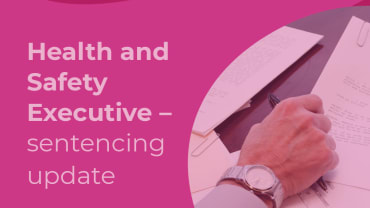This week it's Mental Health Awareness Week in the UK; and, as my colleague Ellen Andrew will be looking at in her blog later this week, the coronavirus outbreak has had a significant impact on the UK's mental health. The most recent figures from the Office for National Statistics indicate that 42% of adults said their well-being was affected by the pandemic; which was in fact a reduction from 48% the week before. As part of our focus on the importance of protecting mental wellbeing at work, this blog considers what employers should think about when communicating with employees during COVID 19.
Government Guidance
As employees begin to return to the workplace, the Health & Safety Executive (HSE) has issued a guide to help employers. "Talking With Your Workers About Preventing Coronavirus" is available here. The Guide covers a range of issues raised by working during the pandemic, including wellbeing and support for employees' mental health.
Duty to communicate
Employers already have a duty to ensure employees are informed about any risks to their health & safety, and any protective measures which are in place.
Regulation 10 of the Management of Health & Safety at Work Regulations 1999 requires employers to provide this information to employees, once a risk assessment has been performed. Of course, the 1999 Regulations apply to all risks to employees' health & safety, not simply to new measures arising as a result of the coronavirus outbreak – but what specific issues arise when communicating during COVID-19?
Points to consider
Each business has to assess the steps required for it; but, some general points to consider may include:
- Do employees know what steps have been taken, and why, to reduce risks to their health?
Explaining the reasoning behind new procedures or work practices may help to reassure employees.
- Is there support in place for employees if they are experiencing anxiety or other issues relating to their mental health? Do employees know how to access this?
If your business already has occupational health or mental health services in place, it may be a good time to remind employees that this is available. Alternatively, employers may consider whether the business can provide online resources. Employees should also be reminded of any support Human Resources teams can offer those experiencing personal difficulties.
- Do employees have a means to communicate any concerns (for example, through a health & safety representative)? Is there two-way communication between employers and employees?
Having an open line of communication may encourage employee engagement in, and understanding of, any new procedures. It may also help to address any issues at an early stage, to reduce the risks of employees becoming anxious or stressed.
- If there are reduced numbers of staff due to working restrictions, furlough schemes or sickness absence, could this pose a risk to employees' mental wellbeing?
Increased workloads, working in a different team or area of the business, or giving employees new tasks without support and training could impact on their mental health. Employers may wish to consider ways to monitor or manage workloads, to ensure staff are not being overwhelmed – and also to communicate these steps to employees and to allow employees to feedback any issues.
The current pandemic is causing a great deal of anxiety for everyone. When planning a return to work, employers need to be aware that not only do they have a duty to protect employees' physical health; but, also an obligation to consider mental health as well.
Contributor
Associate











